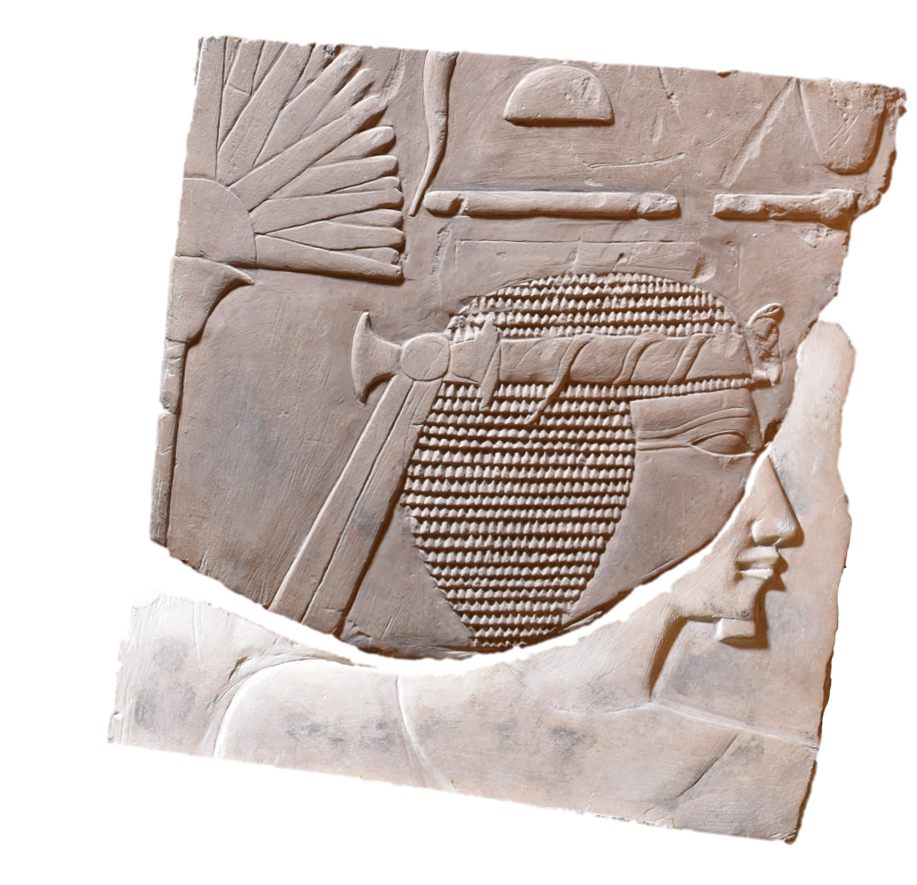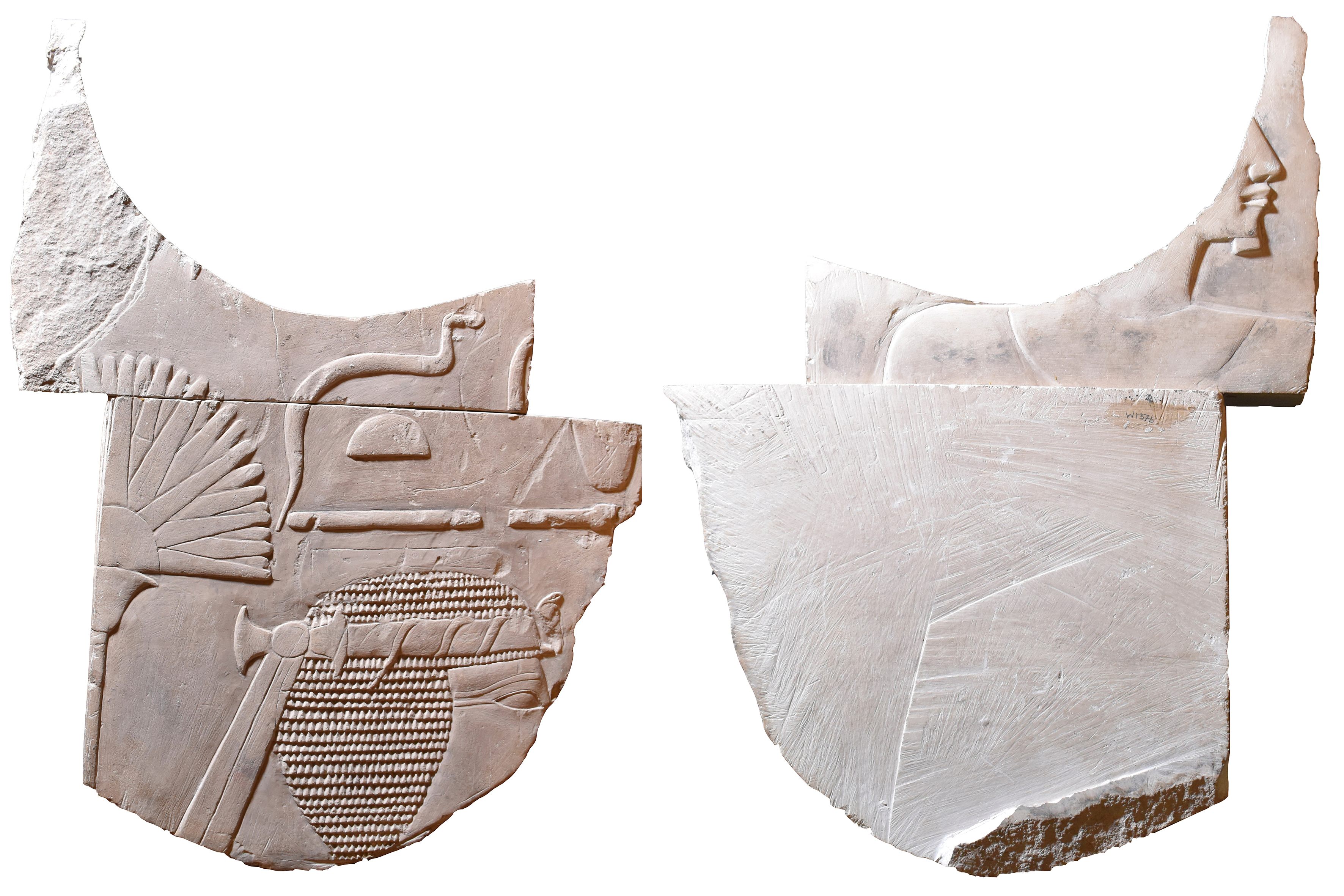Found: An Ancient Depiction of Egyptian Pharaoh Hatshepsut
A broken artifact sat in storage for over 20 years before an expert spotted the queen on it.

There were only a few female pharaohs who ruled ancient Egypt, and out of them, Hatshepsut is a legend in her own class. During her reign from 1478 to 1458 B.C., she built up Egyptian civilization to prosperous fortune by establishing trade routes as far as Ethiopia and leading successful military campaigns against legions in Nubia, now modern-day northeastern Africa. When she died, she left a distinct legacy that is reflected in ancient monuments and pottery that are still being unearthed today.
A recent reanalysis of two artifacts housed at Swansea University in Wales has revealed another depiction of the Royal Highness. Excavated by the Egypt Exploration Society in the early 20th century, the two limestone fragments arrived at Swansea University via entrepreneur Sir Henry Wellcome, where they lived in storage for over 20 years. The lower fragment shows the part of a person’s nose, mouth, chin, and neck. The upper fragment shows a partially cracked one-eyed head, with a leaf fan and distinct traces of hieroglyphics above the head. Based on the cobra on the figure’s forehead, which in Egyptian iconography typically means the person was a pharaoh, archaeologists presumed this person was indeed a high-class citizen. But who?

When Professor Ken Griffin examined the artifacts he realized the hieroglyphics resembled reliefs in Hatshepsut’s tomb in Luxor, Egypt. The reliefs, like the fragments, also had similarly carved cobras above Hatshepsut’s head, and the hieroglyphics employ the feminine pronoun. When glued together the fragment revealed Hatshepsut’s full visage.
It’s still unclear where the object came from. It looks like the upper carving was forcibly removed and carved again, possibly to make it attractive for sale hundreds of years ago. Professor Griffin and his team are conducting further research to pinpoint the fragments’ exact location, but for now it’s on display at Swansea University’s Egypt Centre.










Follow us on Twitter to get the latest on the world's hidden wonders.
Like us on Facebook to get the latest on the world's hidden wonders.
Follow us on Twitter Like us on Facebook